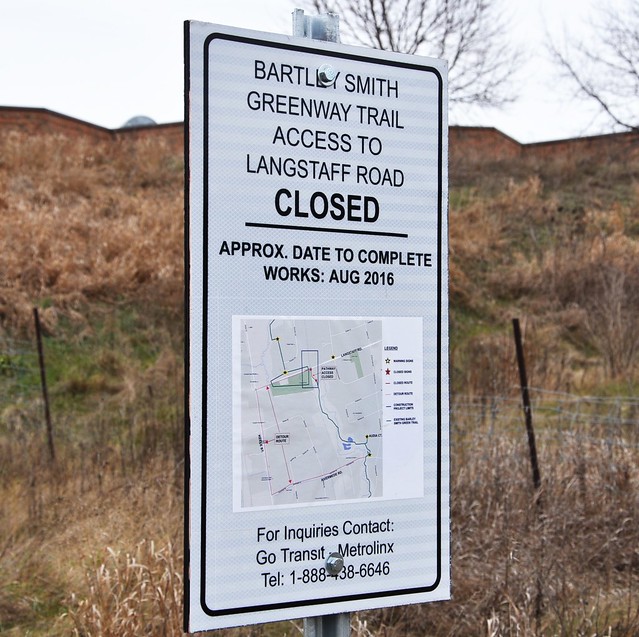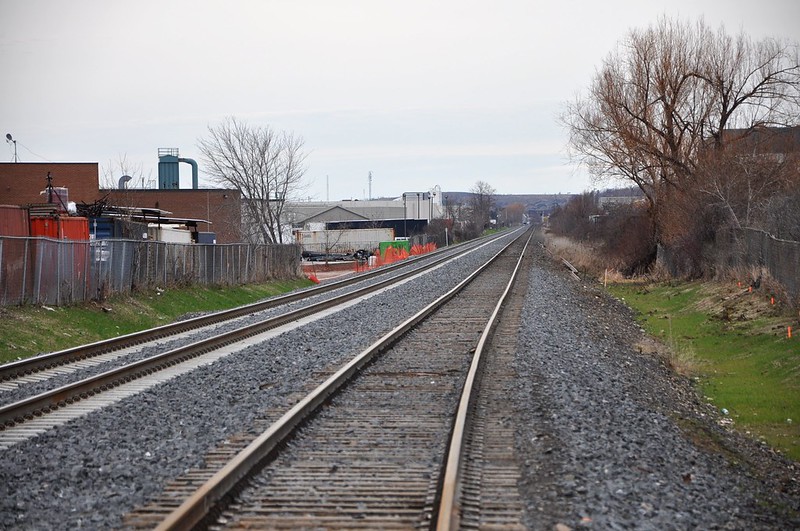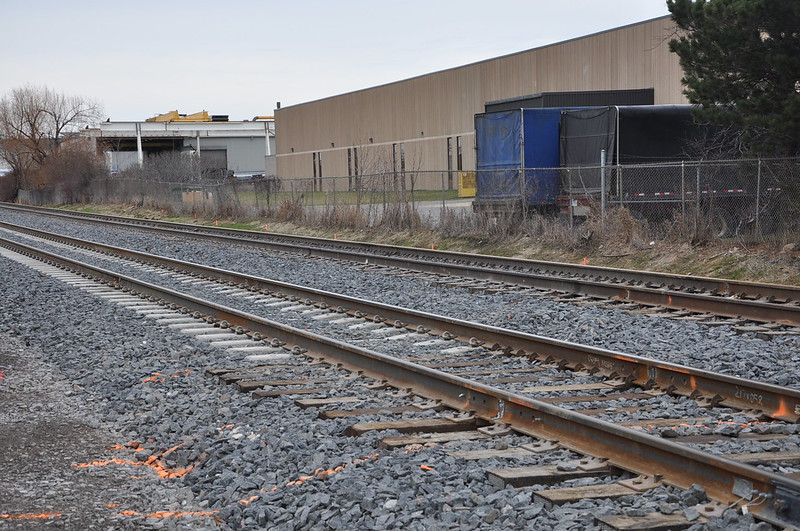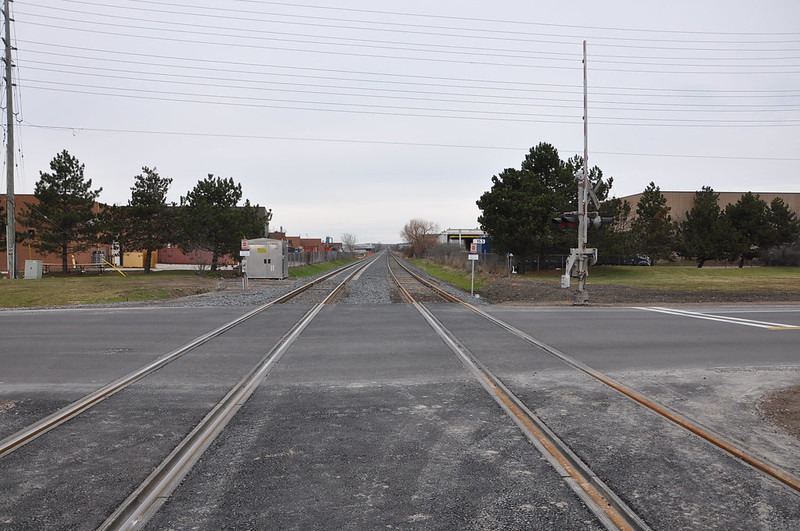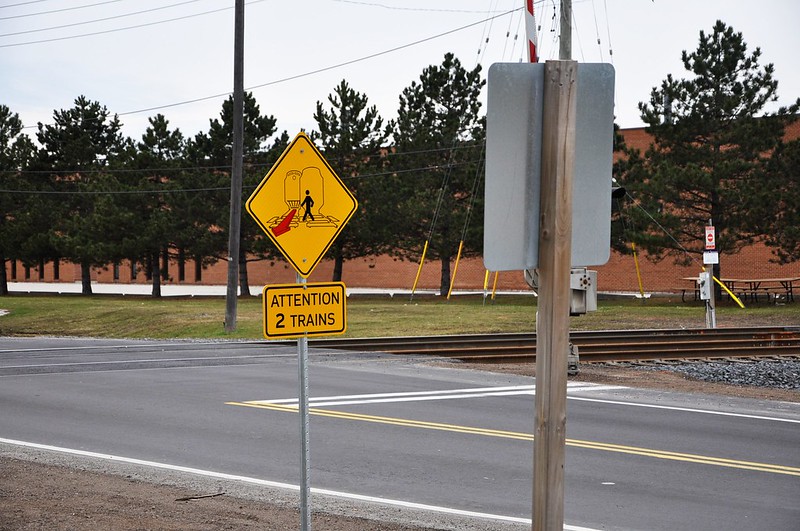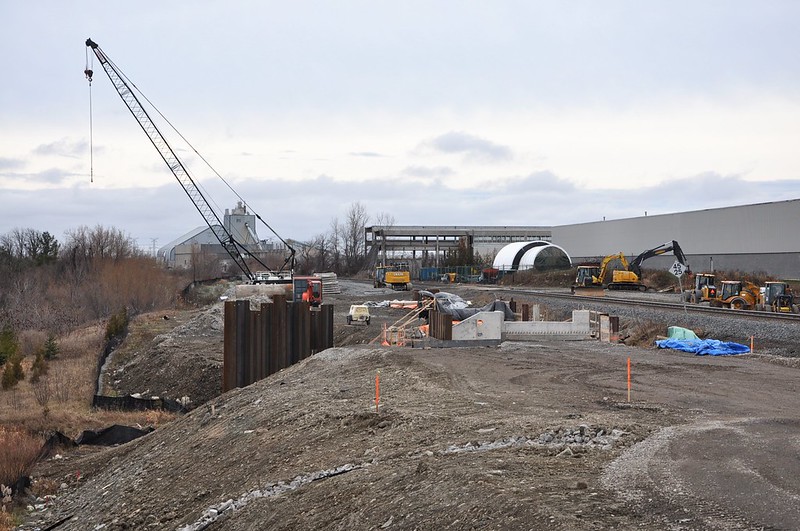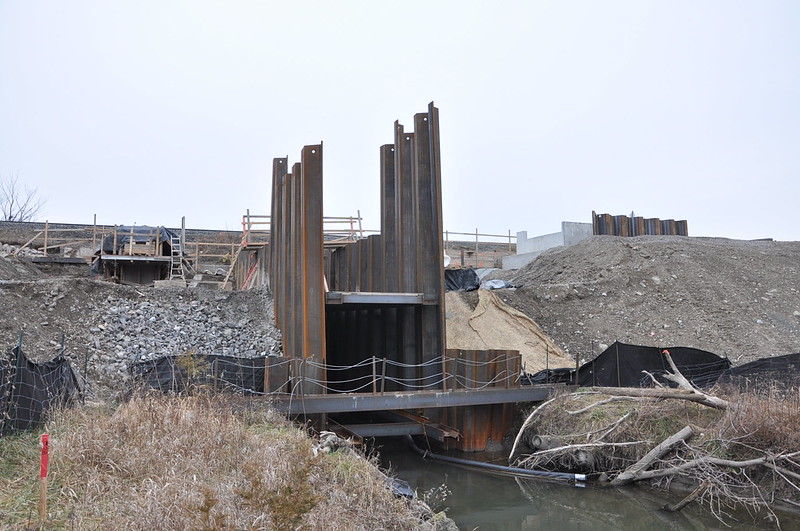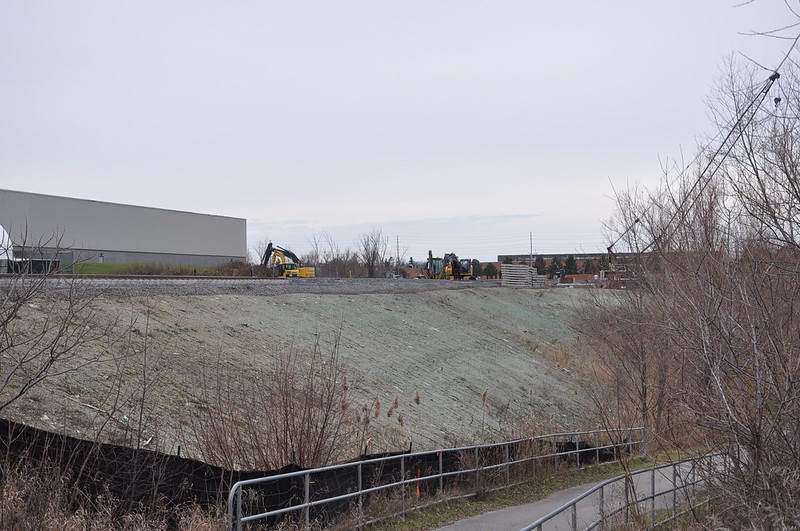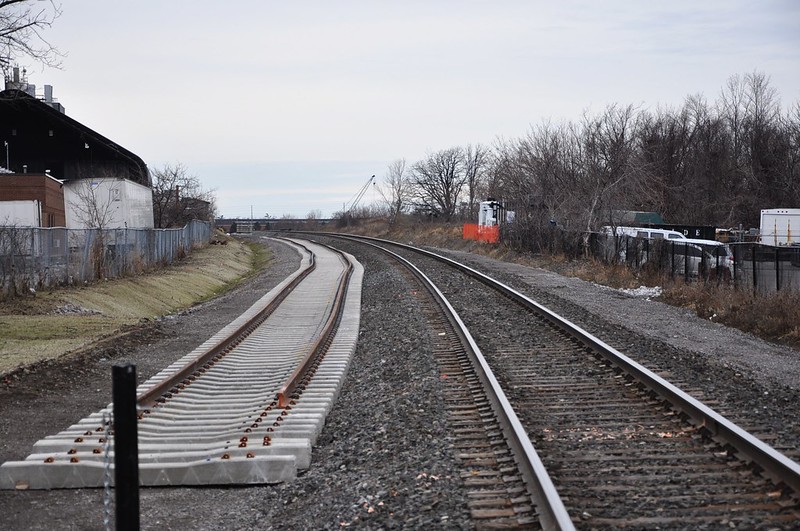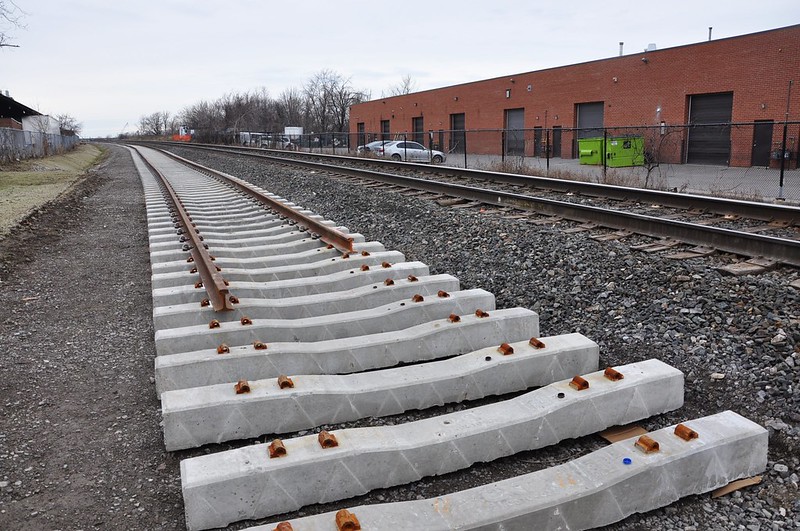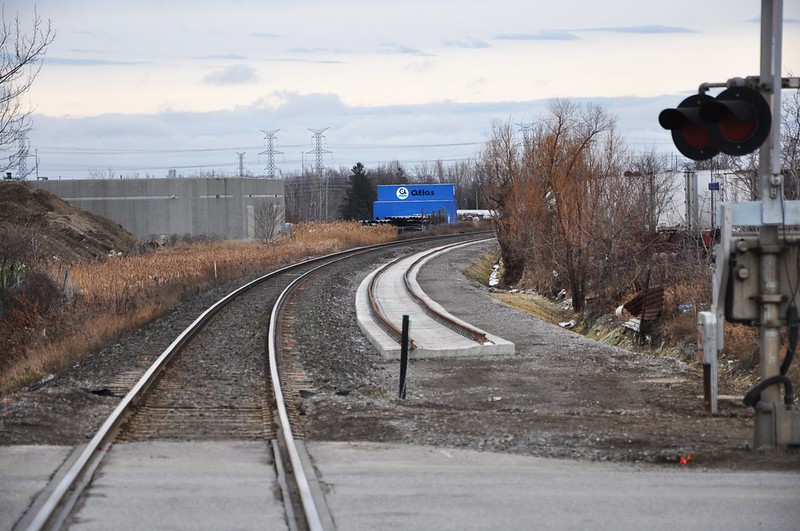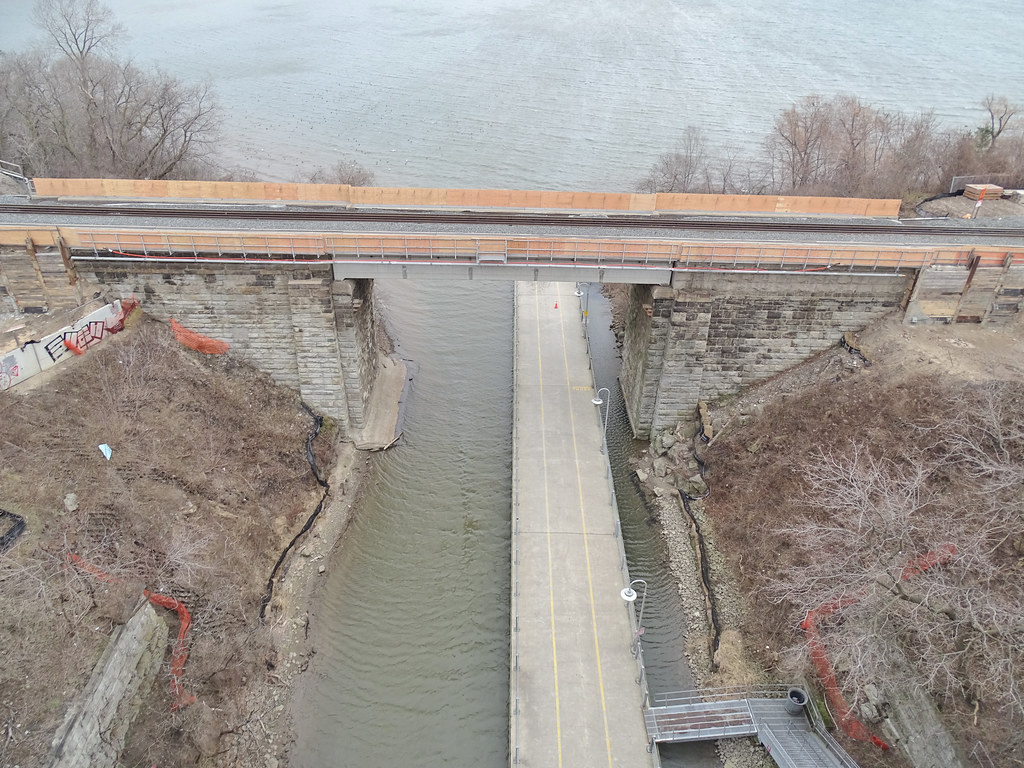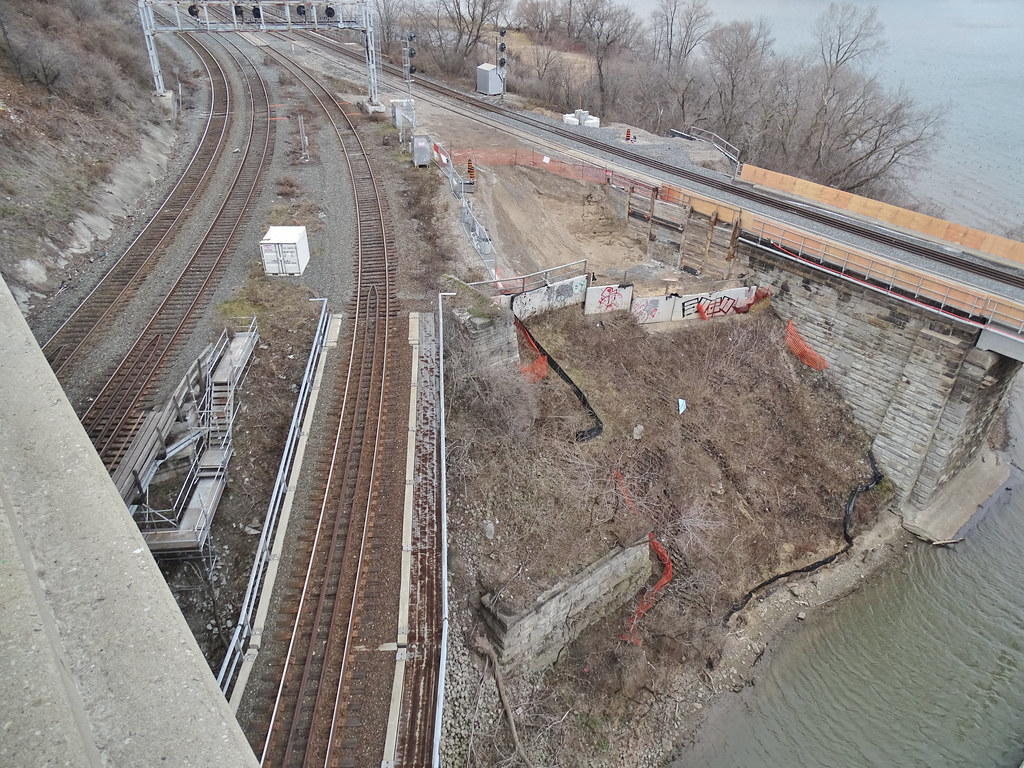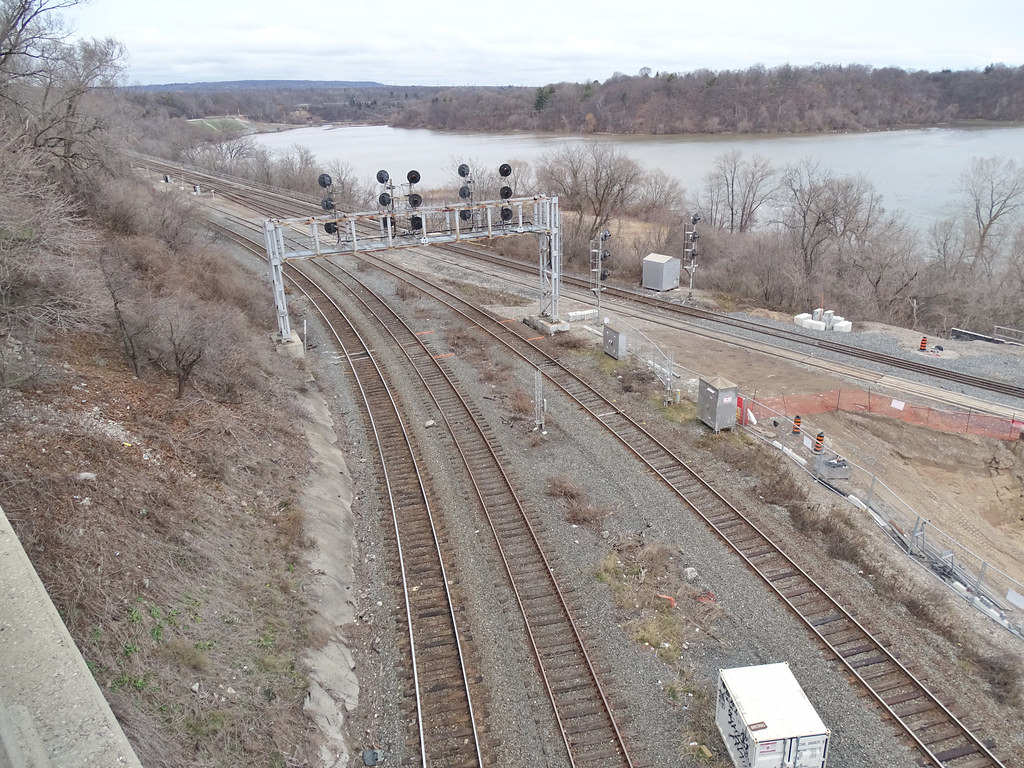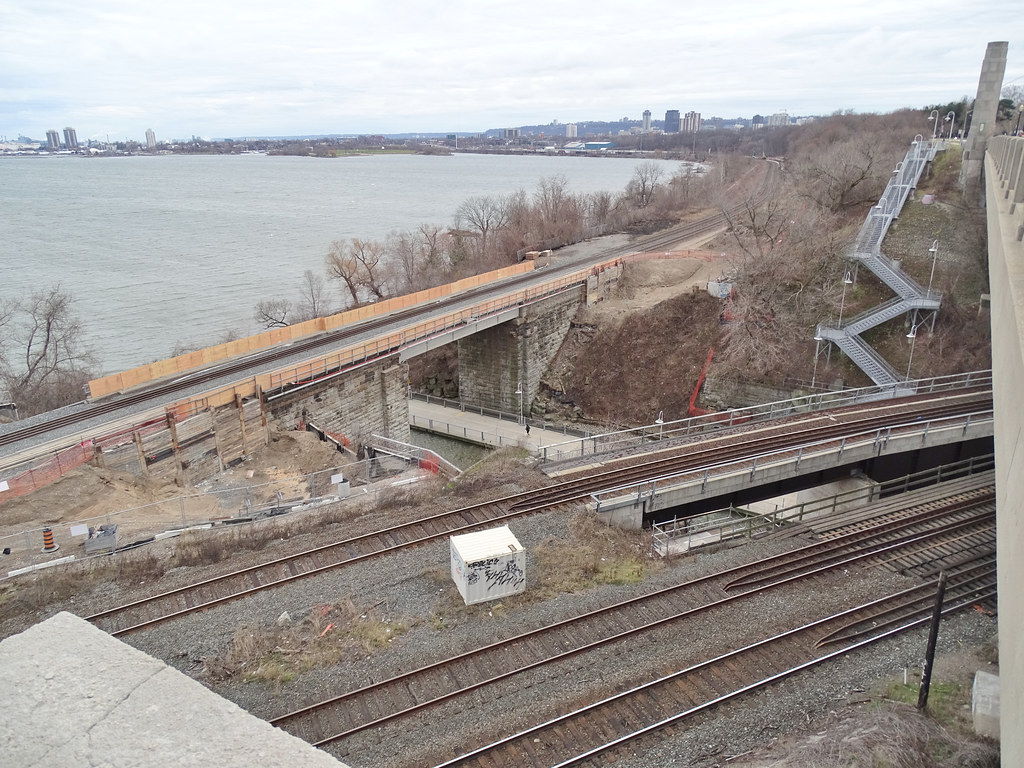Barrie Line double-tracking update through Vaughan, December 26 2015.
The new track is being built with concrete ties!
According to the trail closure sign, this construction is expected to be complete around August 2016.
Looking north from Langstaff Rd. Trains are now using the new track.
For some reason, the Langstaff Rd crossing crossing was built with wooden ties. Here is the transition.
Looking north across Langstaff Rd.
New 2-track crossing sign. I get that it's bilingual, but it still seems a bit odd to say "2 trains" rather than "2 tracks".
Looking south from Langstaff Rd.
Embankment widening south of Langstaff Rd. The speed limit sign indicates 45 mph (72 km/h) for passenger trains.
Stack of concrete ties on the embankment.
Culvert widening over the West Don River.
South of the culvert it embankment grading seems to be complete.
Looking north from North Rivermede Dr.
Closeup of the new concrete ties.
Looking south from North Rivermede Dr.





